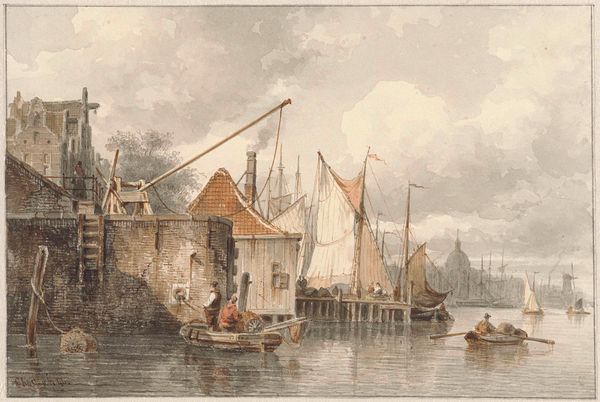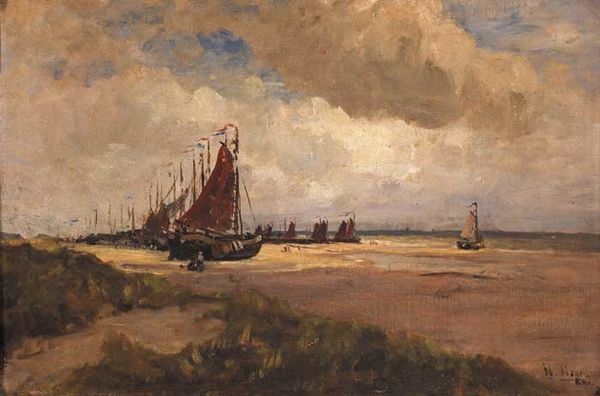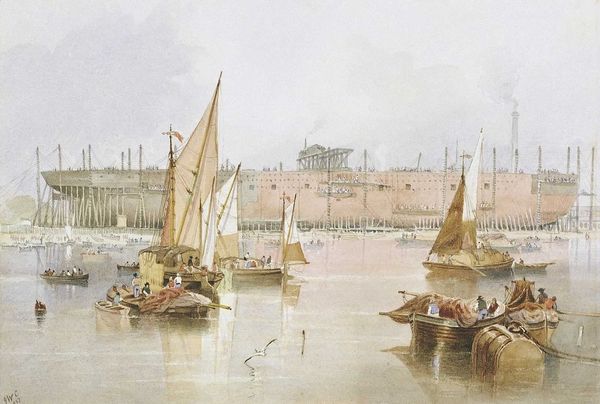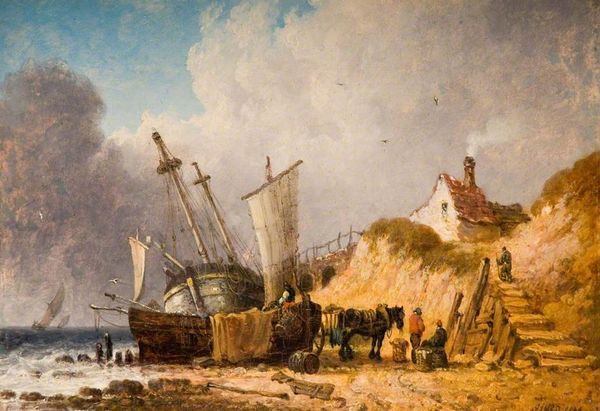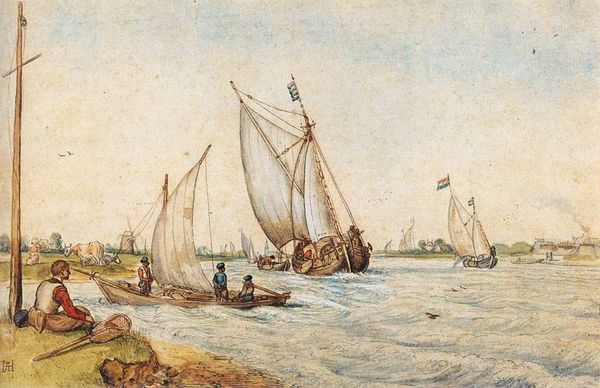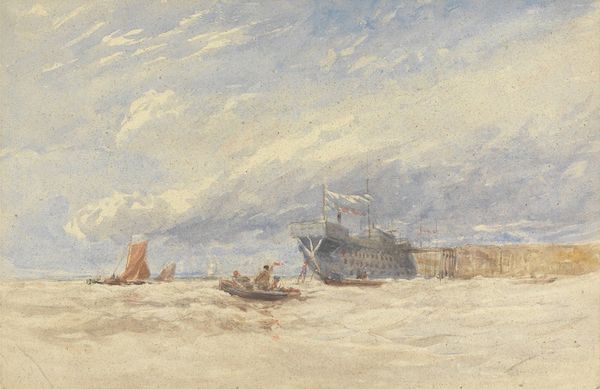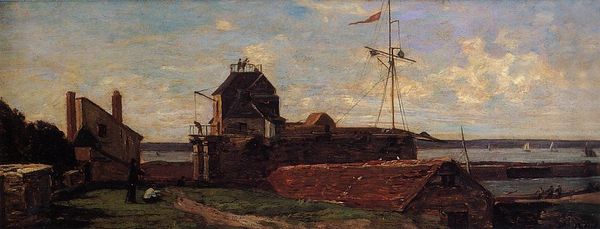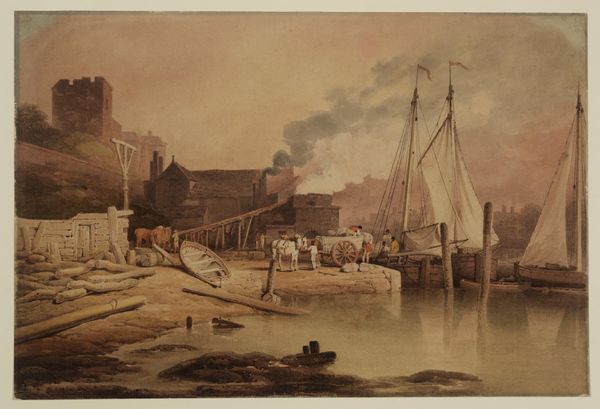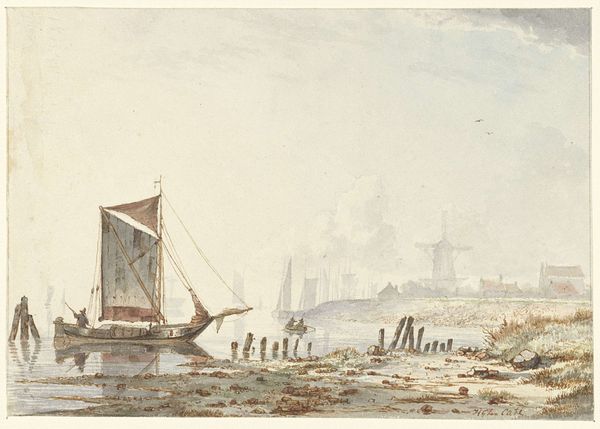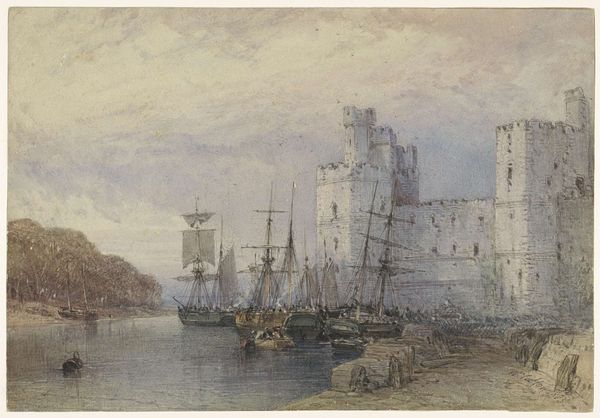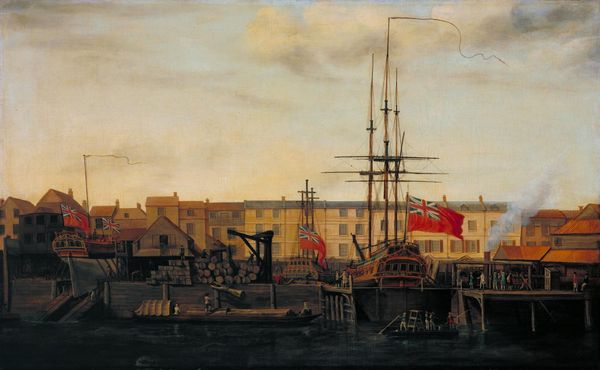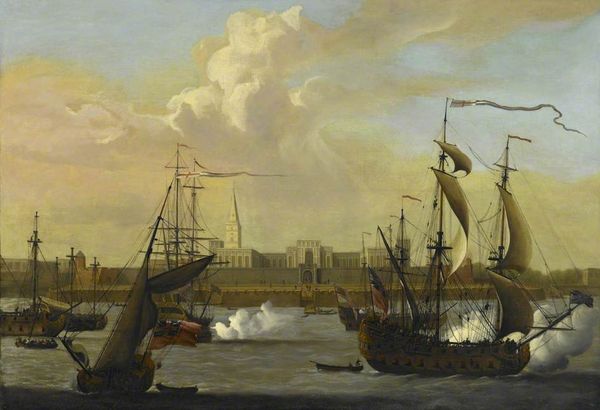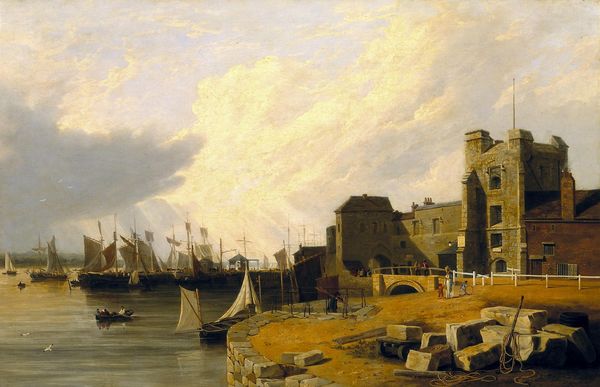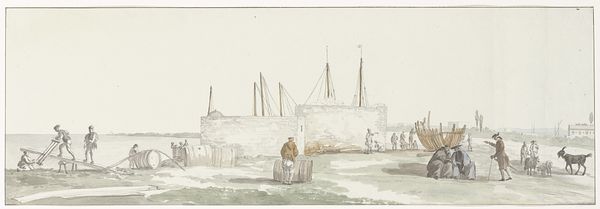
Octave Chamouillet Pushing a Wheelbarrow in a Garden 1845
0:00
0:00
jeanbaptistecamillecorot
Rhode Island School of Design Museum (RISD Museum), Providence, RI, US
#
ship
#
landscape
#
harlem-renaissance
#
oil painting
#
romanticism
#
cityscape
Dimensions: 20.6 x 15.5 cm
Copyright: Public domain
Curator: Standing before us is Camille Corot's oil on canvas work, "Octave Chamouillet Pushing a Wheelbarrow in a Garden," created in 1845. It's currently part of the Rhode Island School of Design Museum collection. Editor: Oh, what a beautifully melancholic scene. The muted colors and hazy light evoke a sense of quiet contemplation. There's something timeless about it, like peering into a half-remembered dream. Curator: I'm drawn to the interplay between industry and nature. We have these imposing ships anchored in the harbor juxtaposed with this rather unkempt, almost wild garden. Editor: Absolutely. The composition leads your eye on a journey. The solid, grounding wall in the foreground, then upwards to the soaring masts of the ships. But it’s the garden with a man that is almost like a quiet secret amidst all the maritime bustle. He seems dwarfed by the setting; like he is questioning the grandure of the world around him. Curator: And those ships aren't just decorative elements, are they? They represent trade, colonialism, a whole network of socio-economic exchange happening during that period. What's fascinating is how Corot, better known for his landscapes, subtly incorporates these complex elements into the work. He doesn't shy away from acknowledging the world beyond the pretty scenery. Editor: True, there’s that human element that always peeks into grand, abstract human enterprise. The garden itself, the labor, seems a human anchor – and not grand, just...present. What resonates, too, is how painterly it all is. Loose brushstrokes everywhere, lending it that dream-like quality. He isn't interested in precise rendering, but rather in capturing the mood and atmosphere. The ships could appear anywhere: memory, or hope, even. Curator: Exactly. Corot wasn’t interested in straightforward documentary, more in distilling emotional truths. It's a quiet reflection on modernity taking hold, and the spaces still left for human simplicity. Editor: The way Corot captures light, and infuses everyday scenes with something bigger really brings it all together. I leave more attuned to the possibilities within mundanity. Curator: And for me, it’s a poignant reminder that progress isn’t a straightforward, universally positive force; instead, it’s complicated, often ambiguous.
Comments
No comments
Be the first to comment and join the conversation on the ultimate creative platform.
